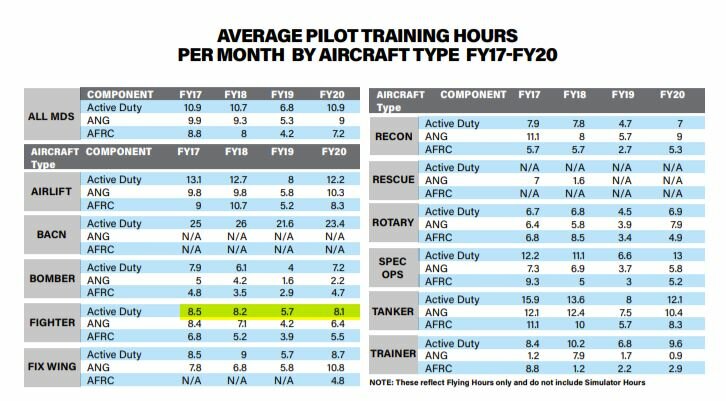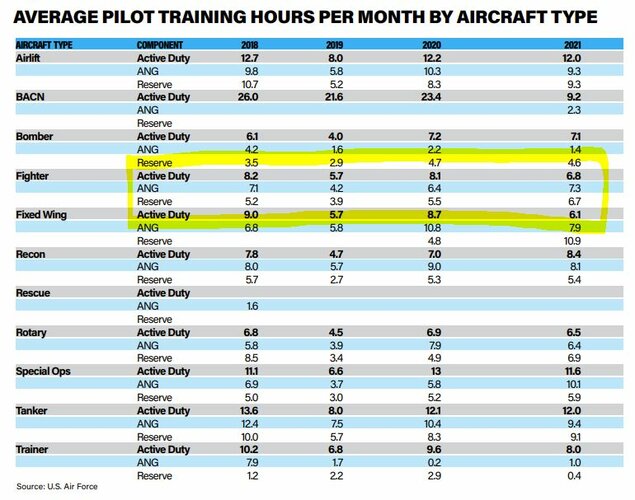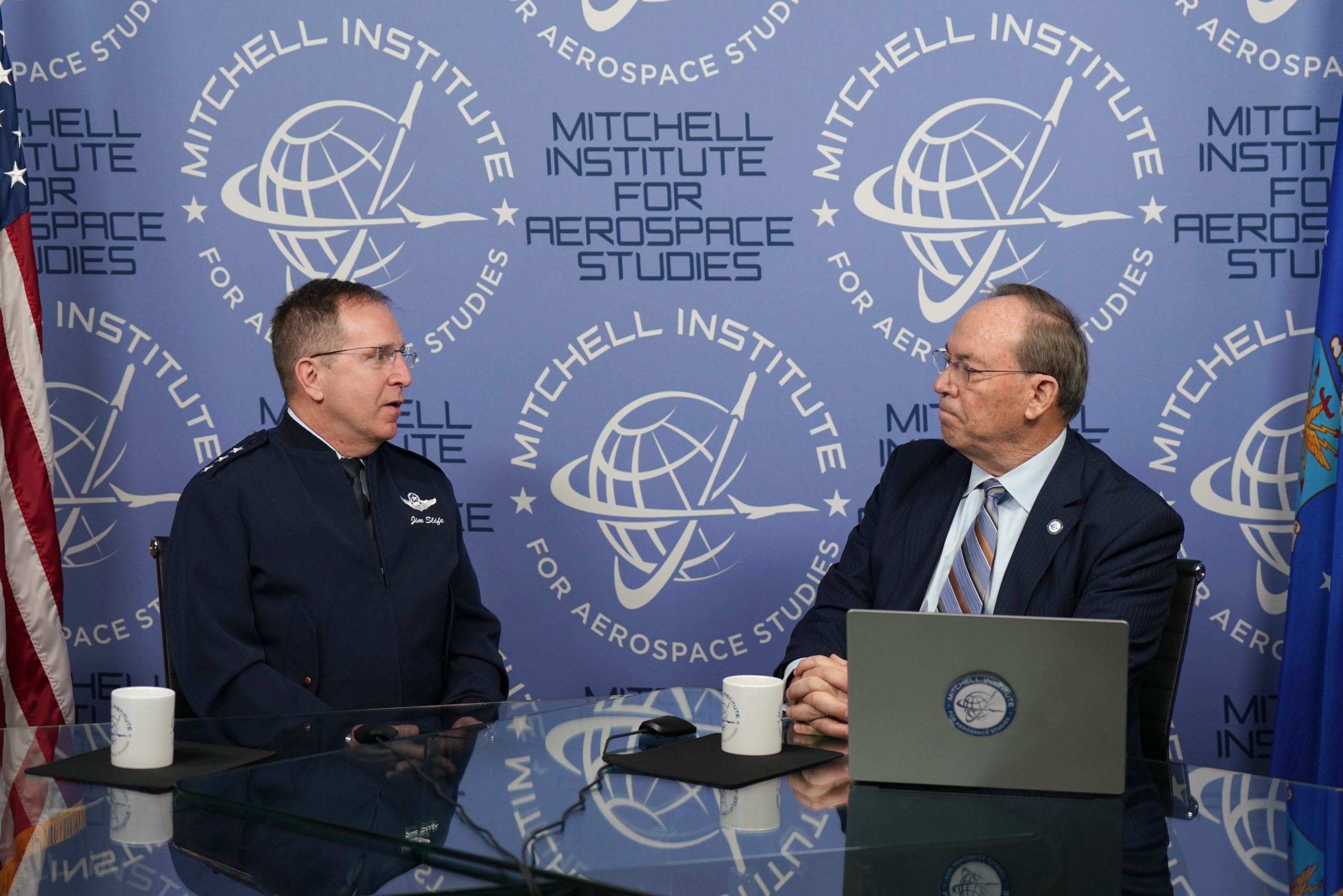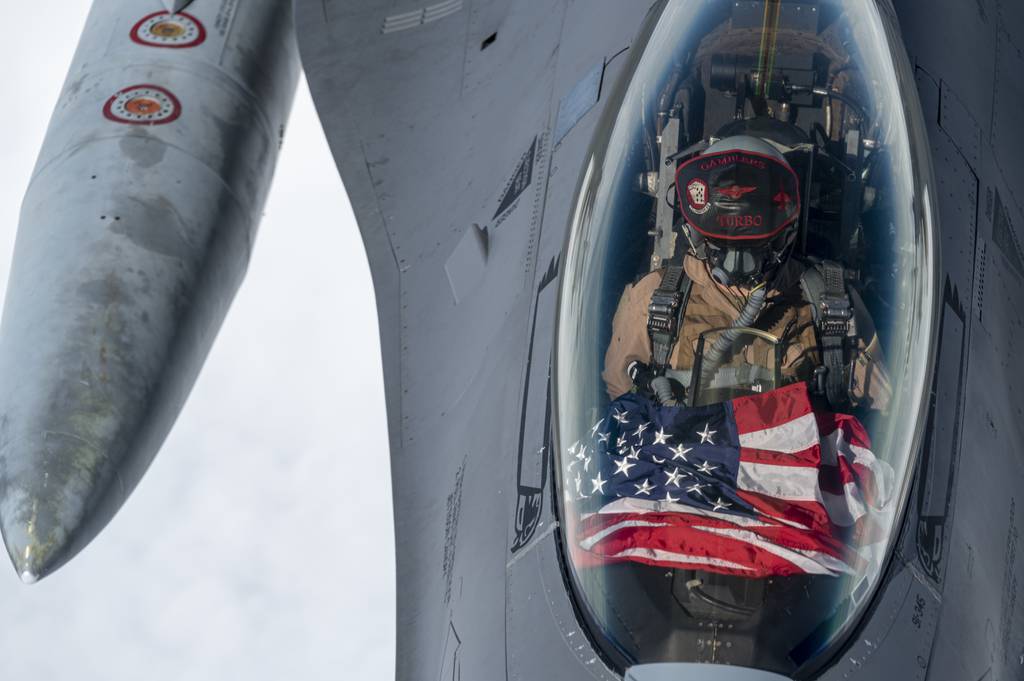
The above is a bit from the newest Air force Magazine Almanac publication, from June 2021.
If I am reading it correctly, it says that active duty air force pilots on fighter aircraft had just 8 point something hours of training per month?!? In the last several years?
And for some reason that dipped to only 5.7 hours in 2019 ?!?
8 something hours per month averages to mere 100 hours per year, if that.
Yes, the table notes those are actual flying hours and that they do not include simulator hours.
But shouldn't the standard be at least some 180-ish hours per year of actual flying hours? and then all the simulator time is gained on top of those flying hours?
What on earth is going on there?
And what happened in 2019, with that huge dip in training hours?




